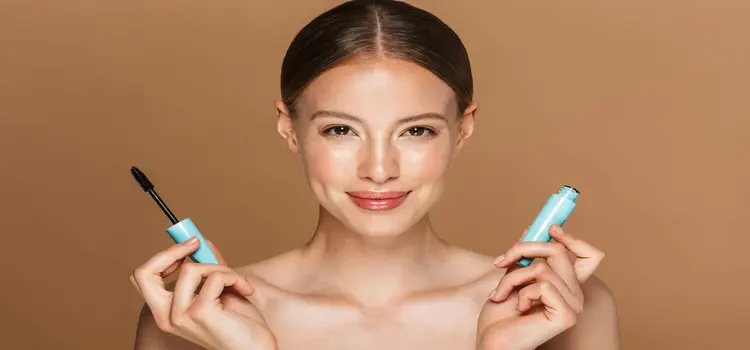Mascara doesn’t always harm your eyelashes. Problems happen mostly when it’s used too often or removed roughly. Some ingredients might cause breakage or dryness. Choosing the right product and caring for your lashes helps prevent damage.
Myths and Facts About Mascara Damage
Many believe mascara always damages eyelashes. That’s not true. Safe mascaras and gentle removal protect lashes well. Waterproof mascara often gets blamed for damage. It can dry out lashes if not taken off carefully. But with the right remover, it doesn’t harm lashes.
Some think wearing mascara daily ruins lashes. The truth is, damage comes from how you care for your lashes, not the frequency of use. Another myth says mascara stops lashes from growing. Mascara itself won’t stop growth.
However, rough removal or old mascara can cause lashes to break, making them look thinner. Lastly, people think eyelash serums are necessary when using mascara. While serums can help, they aren’t always needed. Good mascara and proper care keep lashes strong on their own.
How Mascara Can Damage Your Lashes
Mascara can damage your lashes mainly through dryness and breakage. Many formulas contain ingredients that dry out the lashes, making them brittle over time. Applying mascara too thickly or layering multiple coats can weigh lashes down, causing them to snap or fall out. Rough removal, such as rubbing or pulling, also weakens lashes and leads to breakage. Using old or expired mascara increases the risk of infections, which can harm lash health.
Ingredients That Cause Lash Damage
Mascara can contain ingredients that harm your lashes if you’re not careful. Alcohols, like denatured alcohol or ethanol, dry out lashes and make them brittle. Parabens, which are preservatives such as methylparaben or propylparaben, may irritate the delicate skin around your eyes and weaken lash roots. Formaldehyde-releasing preservatives, like quaternium-15 or DMDM hydantoin, can cause allergic reactions and damage the hair follicles that grow lashes. Synthetic fragrances and dyes, often listed as “parfum” or colorants like FD&C Red No. 6, can trigger sensitivity and lash loss. Thick waxes and polymers—ingredients such as beeswax, carnauba wax, or acrylates copolymer—add volume but can weigh lashes down, making them more prone to breakage.
Signs of Lash Damage from Mascara
Lash Breakage During Removal
Your lashes shouldn’t snap just because you’re wiping them. If they do, they’re already too dry. Mascara can stiffen them. Add rubbing or tugging, and they break mid-shaft. Look at your cotton pad. Tiny lash pieces. Black dust. That’s not mascara—it’s breakage. Over time, this thins out your lash line.
Stinging or Redness at the Lash Line
Your eyes shouldn’t sting after applying mascara. Or itch when you’re removing it. If the skin near your lashes turns red or feels raw, that’s a warning. Some ingredients trigger reactions—parabens, dyes, preservatives. It’s not always full-blown allergy. Sometimes it’s just irritation that weakens the base where lashes grow.
Dry, Rough Lash Texture
Run your finger along your lashes. If they feel stiff or sandpaper-like, that’s dryness. Mascara shouldn’t leave lashes crunchy. This happens when formulas strip out moisture. Dry lashes don’t bend—they snap. They also don’t hold shape or recover easily. Once they lose their softness, damage builds fast.
Uneven or Patchy Lash Line
Full lashes don’t just disappear overnight. If you’re noticing gaps or uneven spacing, check your habits. Lashes may be breaking at different lengths. Or falling out altogether. This isn’t natural shedding. If you never had gaps before, your mascara or how you remove it might be the cause.
Mascara Looks Worse on Weak Lashes
Damaged lashes show under mascara. The product clumps. It spreads unevenly. Some lashes sag under the weight. You might think the formula changed—but it’s your lash condition. Weak, thinning lashes can’t hold mascara the same way. This is both a sign and a problem. The clumps cause more stress, leading to more breakage.
How Age Affects Lash Damage
As you age, your lash follicles naturally slow down. The hair growth cycle shortens. Lashes grow in thinner, take longer to regrow, and don’t last as long before shedding. This makes them more vulnerable to any damage, especially from drying mascara or harsh removal. Oil production in the lash line also drops over time. Less natural moisture means lashes dry out faster and lose flexibility. Add mascara to the mix—especially waterproof or volumizing types—and the brittleness increases. Older lashes can’t bounce back like they used to. Even light pulling while taking off mascara can lead to noticeable thinning or permanent gaps.
Tips to Repair Lash Damage
Give your lashes a break. Stop using mascara for at least a week. Let them recover from daily stress. Use a lash serum with peptides or biotin. These ingredients strengthen the hair shaft and support regrowth. Swap makeup removers that tug or sting with micellar water or oil-based cleansers.
Be extra gentle—pat, don’t rub. Apply a thin layer of castor oil at night. It seals in moisture and can reduce brittleness. Avoid eyelash curlers for now—they put pressure on already weak lashes. If you’re consistent, small improvements show in two to three weeks.
